In any country, beautiful flowers are brought to the grave of a deceased person in order to give him the last memory. And this is not connected with any particular religion or custom.
To decorate the grave, perennial flowers for the cemetery that are not demanding in care are often used, which do not need a lot of water for normal growth. They grow throughout the summer and do not need a well-lit place. There are quite a few types of these plants, but only the most suitable ones should be planted on the grave in order to avoid violating age-old traditions.
Content
The most suitable plants for decorating graves
First, you should find out exactly what type of soil on the grave, namely:
- clayey;
- sandy;
- black soil.
You also need to determine what kind of illumination on the grave: a large amount of sunlight or partial shade. This will affect the choice of plant variety. There are some plants that are distinguished by their unpretentiousness. They are not afraid of partial shade and drought.
Experts do not recommend decorating graves with rather rare and expensive plants. The fact is that they can simply be stolen.
Carpet plants
For decorating the grave, those plants that weave along the surface of the ground are excellent. Over time, they will grow and form a beautiful "green carpet". Periwinkle Recommended as a carpet plant most suitable for planting in a cemetery.
At the very beginning of the spring period, very cute flowers, painted in a deep blue color, bloom on the periwinkle. In July, the grave will be covered with lush, bright green grass. Such a flower is able to suppress the growth of weeds. Thanks to him, the grave always looks neat and well-groomed.
However, the periwinkle has advantages and disadvantages, in addition to the fact that it grows quite strongly and is able to move to a neighboring grave.
Bunch flowers
Plants that grow in bunches are excellent for cemeteries, for example:
Iris at all times was considered a mourning plant. In this regard, it can be safely planted on the grave.
It is recommended to plant such plants on the grave as close to each other as possible, while it is better not to leave empty spaces between the bushes. It is best if these bunch flowers cover the entire surface of the grave. They bloom in early spring. In the first days of June, their flowering ends.
Trees
If you don't want to plant flowers, then you might consider replacing them with other plants.So, for example, a compact tree or shrub is perfect for this. The best choices for planting in a cemetery would be:
- juniper;
- thin birch;
- thuja;
- aspen.
You should not plant large trees in the cemetery, the fact is that their powerful root system can ruin the monument, and this will also deprive the possibility of burial next to this grave of another deceased.
Flowers suitable for decorating a grave
In eastern countries, irises have long been called "flowers of the dead." But for a long time, the traditions of various peoples have mixed, and in this regard, now a large number of people are striving to take beautiful purple iris flowers with them to the cemetery.
In Greece, it is customary to put pansies or a dark violet on the grave of the deceased. And the Germans, in order to express their sorrow for the deceased, use sunflower flowers.
Even in ancient Russia, there was a tradition to use strawberry bushes to decorate the grave. The ripe berries were pecked by birds, and this was a symbol of sadness for the deceased person. If you wish not to break the tradition, it is recommended to choose yourself what suits you best in this situation.
However, when choosing suitable plants, it must be borne in mind that they must necessarily be unpretentious. And also such flowers should retain their attractive appearance for a long time. The fact is that rarely does anyone have the time to frequently visit a cemetery to take care of flowers and remove weeds. Experts advise to opt for compact perennials. For example:
- calendula;
- echinacea;
- rudbeckia.
Sedums or phloxes can be used to form grave borders. They will look very beautiful and keep their shape for a long time.
You can also decorate the grave with lovely flowers that bloom in the springtime. However, this is only if you have the opportunity to visit the cemetery several times a year. So, for planting you can use:
- daffodils;
- sandboxes;
- tulips;
- forget-me-nots.
After the snow has melted almost completely in spring, these plants will begin to bloom. They will decorate the grave at a time when it will be gray and dull everywhere. If you planted dwarf flowers in the cemetery, then they should definitely pay more attention. The fact is that if there is a fence on the grave, then these flowers will not be able to grow in breadth.
What to look for: flowering or flower shape?
Remember that you need to plant the plants so that during their flowering the grave does not look very variegated, but neat. So, an excellent option would be to plant a periwinkle, which will create a beautiful "green carpet", as well as plant cute blue flowers. In this case, the grave will look well-groomed throughout the season, because the periwinkle will prevent weeds from growing.
Also, when choosing a plant suitable for planting, it should be borne in mind that it must necessarily be drought-resistant. The fact is that on the grave itself there is almost always a low moisture content. So, to the plants, drought tolerant, relate:
- tulips;
- daffodils;
- irises.
Such flowers are bunchy and look very beautiful during flowering. In the spring, it will be possible not to spend money on the parent's on artificial bouquets, since such flowers can completely replace them.
It should be remembered that the soil on the grave is in almost all cases poor, since no one has ever fertilized it. Often it is loam or clay. In this regard, it is simply not suitable for growing, for example, a rose bush.
For planting in a cemetery, such plants are recommended as:
- aspen;
- thuja;
- juniper;
- decorative birch.
The roots of such trees do not go deep into the soil, so they are not capable of damaging the monument. Such plants have a high survival rate, and they grow and develop normally without any human intervention.
In the event that you have absolutely no time to visit the cemetery in order to provide care for the planted plants, it is recommended to plant a bent field along the perimeter of the grave. Such small grass only needs to pinch off the tops once a year and that's it.
For graves in shade, plants such as:
- thiarella;
- waldstein;
- scilla;
- daisies;
- snowdrops.
The most drought-resistant plants suitable for decorating the grave are:
- gypsophila;
- yarrow;
- decorative spurge;
- cloves;
- Armenia;
- alissum;
- thyme.
If there is time for a relatively frequent visit to the cemetery, then it is quite possible to plant annuals on the grave. However, they need to be watered regularly and weeds removed.


Watch this video on YouTube

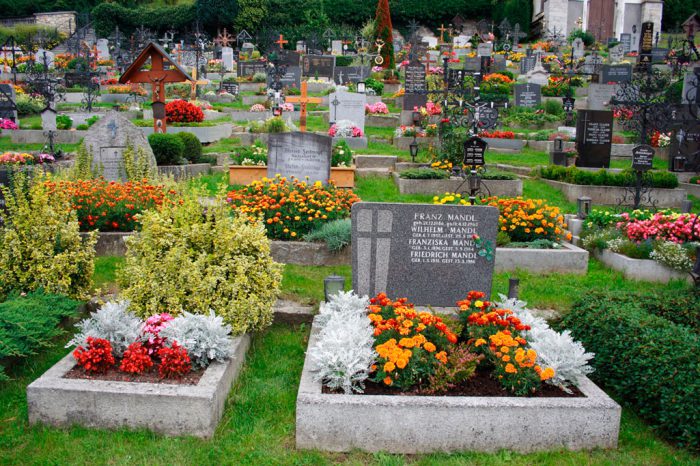
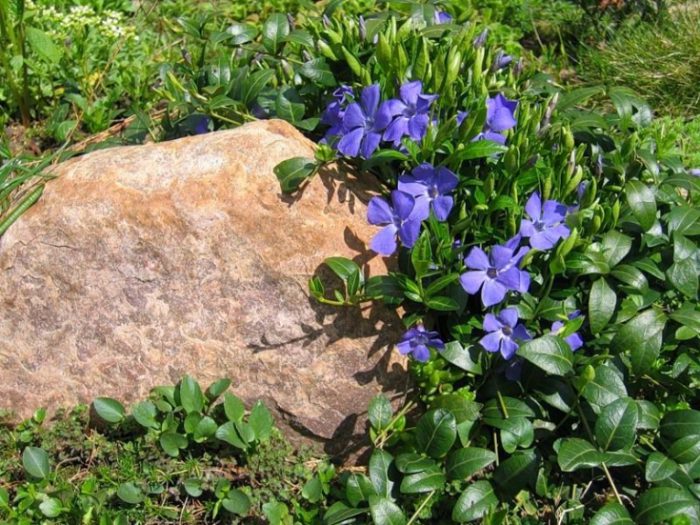
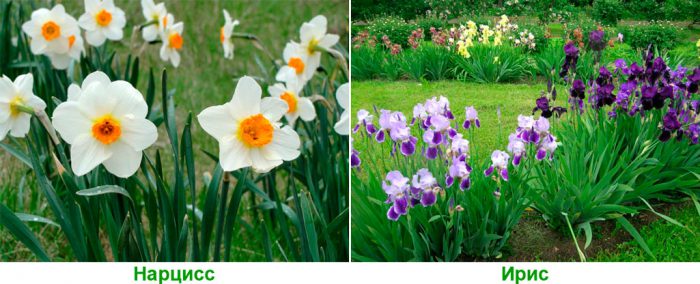
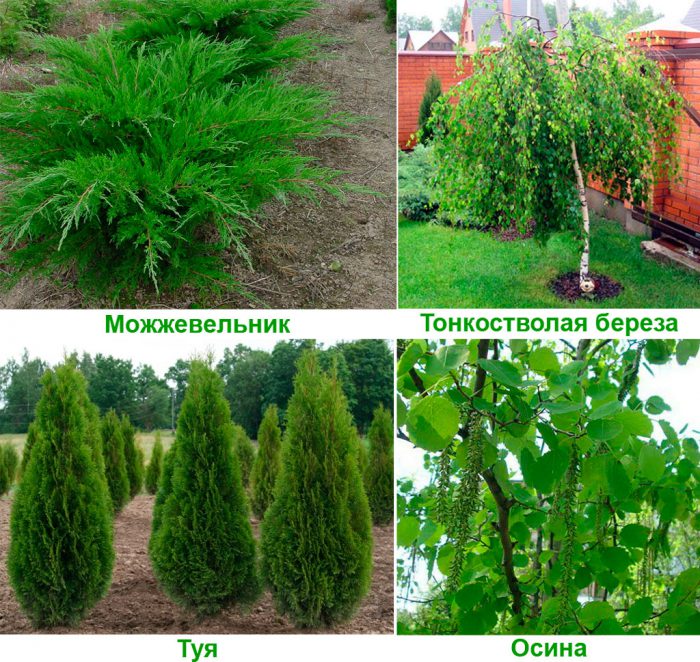

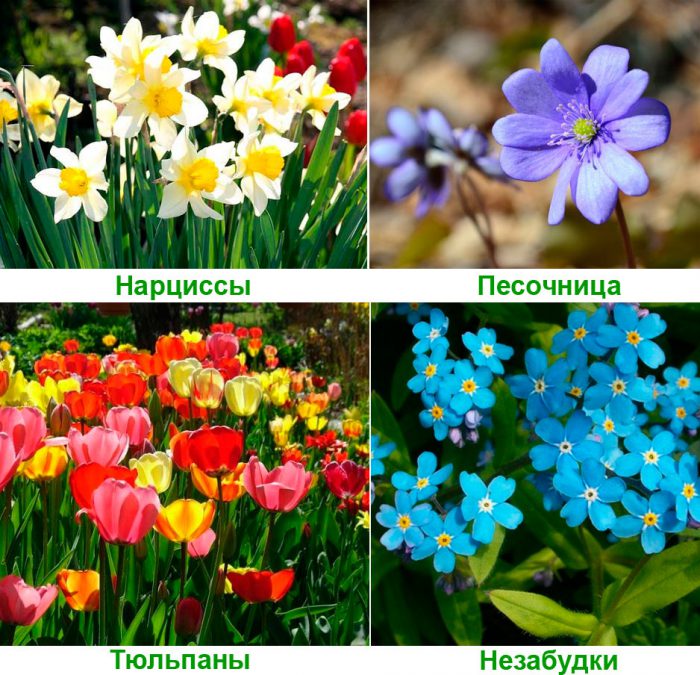
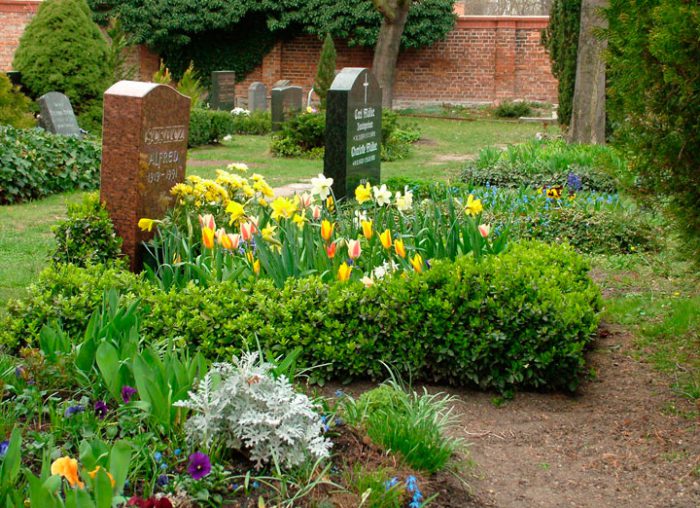
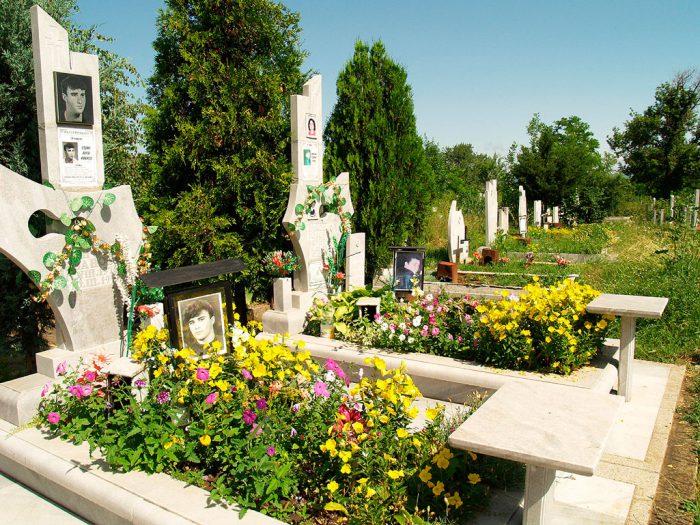










for the graves, I would add gatsania (African chamomile) from flowers, she is not afraid of drought, there are enough rare rains, everyone else needs watering in hot weather.
And what is the name of a periwinkle-type plant creeping, only the flowers there are all multi-colored: red, yellow, blue? I saw such in the cemetery.
decorative purslane
And for 3 years I have not been able to grow beautiful flowers on the grave of my parents, I tried calendula, tulips, escholzia, cornflower, as a result, tulips were cut, and other flowers clog the weeds, this year I am waiting for a carnation, anemone, mb planting lily of the valley, strawberries